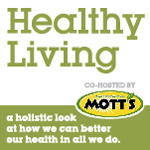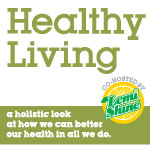“She won’t cooperate.”
“He just won’t sit still.”
“Her moods are out of control sometimes; is this just a bad temper-tantrum phase?”
“His teacher thinks he has ADHD and wants for us to get him tested. But I just don’t think that’s it AND I don’t want to put him on any of those drugs!”
Exasperated parents voice their concerns about their children’s behavior and many times they just aren’t sure what is going on and how to explain it other than chalking it up to poor behavior. But that just may not be the case. What it may be is a much easier fix than going through a myriad of tests and researching behavior augmentation theories. Take a look at the child’s diet.
Each year, food manufacturers create 15 million pounds of artificially-dyed food into U.S. according to the Center for Science in the Public Interest (CSPI). Just what are foods dyes (aka food coloring)? They are those red, green, yellow and blue liquid colors that are used to make that frosting look like a painting or a cereal like a rainbow or those yogurts a shade of pink or blue. When the food looks like it was colored by crayons, it probably was dyed and the majority of kids’ foods are.
So what’s the big deal and what just do dyes do to children? It turns out, quite a lot.
“Research has associated food dyes with problems in children including allergies, hyperactivity, learning impairment, irritability and aggressiveness. A U.S. study published in Science found that when children who scored high on a scale measuring hyperactivity consumed a food-dye blend they performed worse on tests that measured their ability to recall images than when they drank a placebo. A 2007 British study found that children who consumed a mixture of common synthetic dyes displayed hyperactive behavior within an hour of consumption. (These children had not been diagnosed with ADD or ADHD.) The results, published in The Lancet, prompted Britain’s Food Standards Agency to encourage manufacturers to find alternatives to food dyes. In July 2010, the European Parliament’s mandate that foods and beverages containing food dyes must be labeled as such went into effect for the entire European Union.” source
Not thinking this is such a big deal? Well take a look at a typical day in your child’s diet? How many things are colored naturally or by “artificial color,” “artificial color added” or “color added”? Apparently it’s 5x the amount than we consumed as kids.
So here’s what to look for:
– AVOID these words in your food’s ingredient list: any color + number combo- Blue 1 and 2, Citrus Red 2, Green 3, Red 40 and 3, Yellow 5 and 6, Orange B. Food manufacturers in the U.S. can use nine dyes in all.
– Eat organic foods or foods that are dyed by fruits or veggies. Check for the USDA certified organic logo to be sure.
It’s a good thing to try to limit food dyes even if you don’t suspect they are affecting your child’s behavior or health. Eating foods that are naturally colored is the best way to still have some fun food but be safe too.
Green Parenting is published every Friday.
For questions, story ideas or comments feel free to email Elise Jones.




